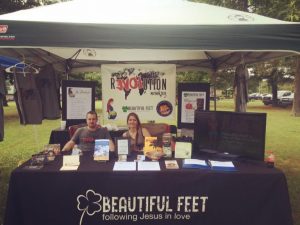
It is hard to believe that it has been over a year since we devoted our lives to missionary training. The past 12+ months has provided an amazing opportunity for us to grow in so many ways. Some days were beautiful and we wished they would never end. Other days could have easily been compared to a dumpster fire. It is in the bittersweet balance of the highs and lows where we have seen our true spiritual growth during the last year. We are continually learning of our strengths and weaknesses as we run the race that Christ has set before us. And we are more vulnerable and dependent on the guidance and affection of Jesus than we have ever been.

Reminiscing of last year’s experiences and training coincides best as filling a metaphorical “tool-belt”. It is through our preparation of midwifery, agriculture, science, and technology that God had called us to reach the unreached in developing nations. Amie and I have been deliberate at surrounding ourselves with teacher, leaders, and like-minded disciples who embrace the passion to bring light to the darkest of places through community development.
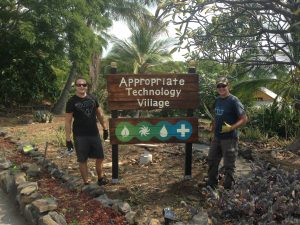
My Primary Instructors Don Rogers and Brent Yskes
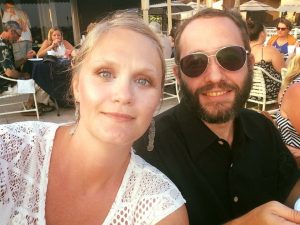
Amie’s Primary Instructors Derek and Amy Kirbow
There isn’t a cookie-cutter approach to facilitate making disciples of all nations. Our creator has given each one of us gifts and passions that edifies the Kingdom of God. For the musician, it is through worship. For the teacher, it is through education. For the physician, it is through healing and medicine. Amie and I are none of the above. However, we both share a holistic passion to serve and educate families about the importance of overall health, stewardship of resources, proper nutrition, and the Good News of Christ Our Lord and Savior!
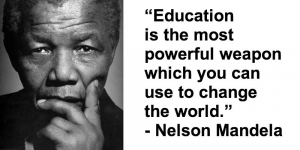
For more than 12 months now, Amie and I have poured ourselves into our individual training. Amie has graduated from the GoMidwife program at the University of the Nations in Kona. She is currently pursuing apprenticeship as a student midwife to receive her certification through the North American Registry of Midwives (NARM). Amie is also on the cusp of receiving her certification as a Doula as she continues to coach mothers during childbirth. If you would like more details of Amie’s training and certification then she would be more than willing to give you the details of her “tool-belt”.

Prenatal Exams on clinical day
The nuts and bolts of my training covers a wide range of sustainability. A good place to start is the basics of “Food Security”. This isn’t just building a barrier around a garden or fruit trees. Food Security answers a multitude of questions like:
What do I do with a massive bumper crop?
Is my livestock receiving proper nutrition?
What crops should I grow that will sell at a premium in the marketplace?
Are my soil conditions right?
Am I maximizing the use of rainfall?
Do I have a big enough budget for people to help at harvest time?
How do I protect my food from invasive species?
The questions and answers concerning “Food Security” are endless! Keep in mind, the developing nations that Amie and I are planning to serve are much different than our western lifestyle. Food Stamp programs, WIC, and Social Security only exist in first world countries. A marginalized budget for minimal resources is extremely problematic for people who are born into extreme poverty. When embraced, “nontraditional” techniques of farming has the potential to provide a solution to combat hunger and empower communities in developing nations through Food Security.
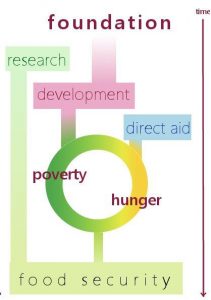
A few examples of “nontraditional” farming techniques that I have been trained in are:
Aquaponics – a system in which the waste produced by farmed fish supplies nutrients for plants, which in turn purifies the cycled water back into the originating fish tank.
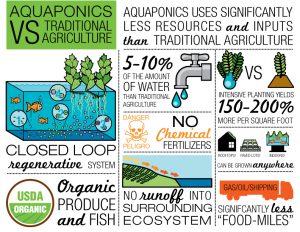
Statistics of aquaponics
Korean Natural Farming – (KNF) takes advantage of indigenous microorganisms (IMO) (bacteria, fungi, nematodes and protozoa) to produce fertile soils that yields high outputs WITHOUT the use of herbicides or pesticides.
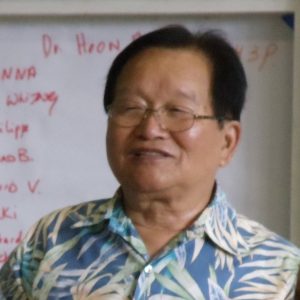
Master Cho was flown in from South Korea to teach the ancient techniques of KNF
Farming God’s Way – A Godly solution imparting a biblical worldview through food security of physical and spiritual poverty for the rural poor.
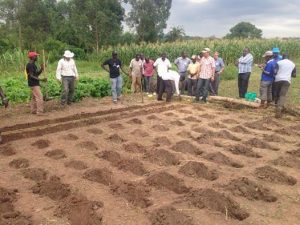
Grid layout of planting stations maximizes the footprint
It is understood that there are limited agricultural resources in most developing nations. The three “non-traditional” concepts listed above maximizes conservation of what resources are available everywhere. Even the marginalized have an opportunity to show good stewardship of local agricultural assets that God has freely given to every one of us.
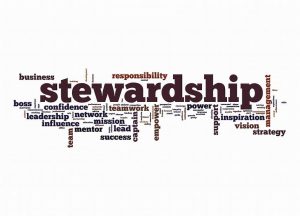
During my time in Kona, I received hands on training on how to make biochar. This homemade insert simply requires non-treated wood, fire, and time. Biochar is a soil amendment that provides a habitat for microbiology to multiply and bring nutrients to plants.

In Kona, it was referred to as an apartment complex for microorganisms to reproduce
Other hands on training that I was introduced to was Vermicomposting. This is the process of worms naturally composting soil with its castings in a constructed and controlled environment. Thus creating organic matter as an insert for healthy soil.
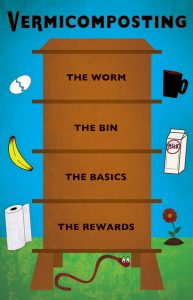
Most people have enough scrap wood in their backyard to build a worm factory
Harvesting black soldier fly larvae is a perfect example of good stewardship. That’s right, I was taught how to farm maggots to feed livestock by constructing a box with ramps where the larvae naturally climb up and fall into a controlled container. The black soldier fly larvae and adults are considered neither pests nor vectors and naturally kill off all other species of flies that are considered invasive pests.
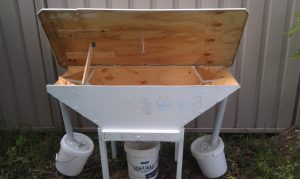
Livestock feed pulled out of thin air
From beekeeping to plant identification, sustainable technology training was so rich and enlightening! I learned about the medicinal properties of fermented foods and a variety of ways to can vegetables. I got to make my first batch of sauerkraut, kimchi, and Kombucha.
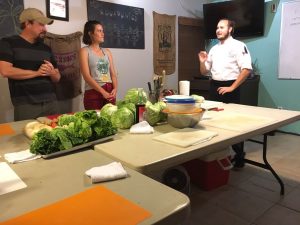
Chef Brent Yskes training in culinary arts
With my years of experience as a fisherman and a hunter, I was able to take part in training other students when we harvested fish, chickens, and pigs. There was even an opportunity for me to learn about shepherding. The holistic food security techniques represent something much deeper than just the food we eat. I can see God in every aspect of agricultural science because we have been given dominion over the earth from the one who created it (Genesis 1:28).
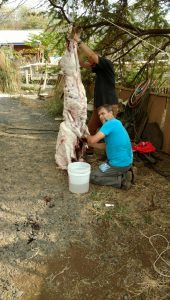
My good friend Tony Arcus butchering a hog
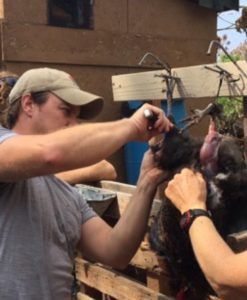
Chicken…it is what’s for dinner
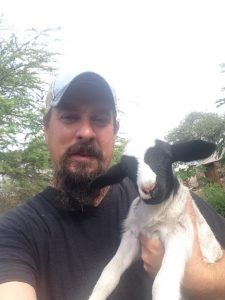
I named him Casserole
The permaculture design class was also amazing! I learned that with enough time, an oasis can literally be created in a dessert just like in Isaiah 41:18. The definition of permaculture is the development of agricultural ecosystems intended to be sustainable and self-sufficient. In other words, permaculture design is being a good steward of land by maximizing water flow, rotating crops, mulching, livestock husbandry etc. As Bill Mollison said: “Permaculture is a philosophy of working with, rather than against nature; of protracted and thoughtful observation rather than protracted and thoughtless labor; and of looking at plants and animals in all their functions, rather than treating any area as a single product system.”

According to Instructor John McGuire, “composting can save the world”
The Food, Energy, Water, Shelter, and Sanitation program (FEWS) at the University of the Nations offered practical training tailored for the missionary’s “tool belt”. Every instructor equipped their students with an attitude to “teach future teachers”. It is in the DNA of the FEWS program to multiply just as the disciples did over 2000 years ago.
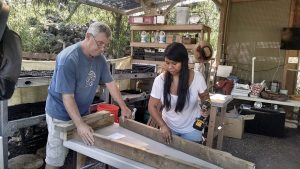
Vernon Byrd is the coordinator for Life Empowering Technology and Science (LETS)
I am going to shift gears from food security and agricultural science to appropriate technology training beginning with water procurement. As you already know, waterborne illnesses combined with malnutrition and poor sanitation are the leading causes of mortality in developing nations. Educating communities about unseen pathogens from poor water sanitation and hygiene can be done, as long as there is somebody willing to go and “teach future teachers.” By doing so; the gates of hell are being stormed, disciples are made, and healing is brought to image bearers of God.

Instructor Cyndi Stratton lights up when she teaches aquaponics
The most efficient and sustainable water purification process that is used in the developing world is a slow sand filter. They are easily constructed with very little investment and require minimal maintenance. Contaminated water is filtered from waterborne pathogens with almost 100% success. I had hands on experience building a slow sand filter and understand how they work by using a complex biological film that grows naturally on the surface of the sand. The main benefit is that it doesn’t require any chemicals such as chlorine, bleach, or iodine.
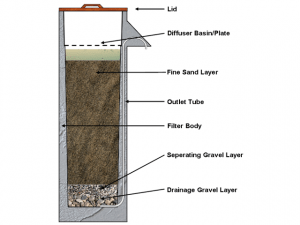
This technology is priceless
In its most simplest form, contaminated water can be sterilized by simply filling a clear plastic or glass bottle and place it in direct sunlight. After a minimum of 6 hours, the UV rays will decontaminate and kill the pathogens. This method works best when the water is unclouded by first filtering it through any cloth material.
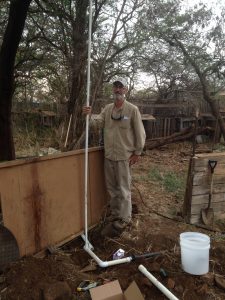
My good friend and Instructor Terry Stratton rerouting a waterline around the hog pen
Other means of obtaining potable water is through harvesting rainfall. In this method, constructing a water storage tank is imperative. We studied how water towers are built and fortunately material like chicken wire, sheet metal, plumbing pipes, and Portland cement can be found near all developing nations. Water tanks, IBC containers and plastic barrels are also available all over the planet.

My primary instructor Don Rogers is quite the artist
There are so many ways to procure drinkable water from channeling natural springs to the individual use of a man-made Lifestraw. Any method to obtain clean water is best when it is reproducible by maximizing the available resources within a people group. Drilling a well may be the only option in some arid places which has the potential to prevent women and children walking miles every day to and from their source. However, the cost of drilling isn’t always attainable and extortion for water rights often takes place within the marginalized social structures.
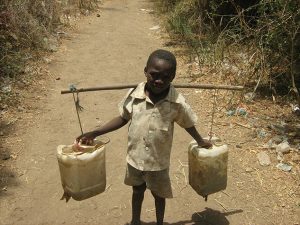
A common sight of a young child carrying water in the developing world
There are always options! For instance, a minimal amount of naturally flowing water can be pumped uphill WITHOUT the convenience of electricity by using a hydraulic ram pump. This device uses the water hammer effect to develop pressure thus pumping water to higher elevation. Getting to use a ram pump in Kona was so exciting! Being in the plumbing industry for five years, I was totally in element. The parts necessary to build a ram pump are minimal and yet it offers a creative dynamic to sustain life.
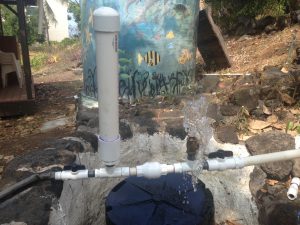
We pumped water 30′ uphill without electricity
The most intriguing of all my training during the last 12+ months is studying solutions of Energy Poverty. A brief description of Energy Poverty refers to the marginalized in developing nations whose well-being is negatively affected by very low consumption of energy, use of dirty or polluting fuels, and excessive time spent collecting fuel to meet basic needs such as heating, cooking, and lighting. The ramifications of energy poverty directly affects the social structures of education, healthcare, communication, commerce, and basic development that perpetuates extreme poverty. In the struggle for the people who endure energy poverty is where you will find the heart of Jesus. It is the “least of these” that Amie and I have been called to serve (Matthew 25:40).
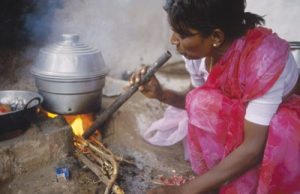
A woman in India cooking indoors
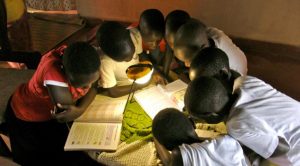
Children in Africa sharing a portable solar light to read
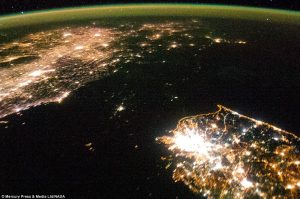
A perfect example of Energy Poverty is between South Korea and China
A technology that directly combats energy poverty is the science behind a biogas digester. Biogas is the mixture of different gases produced by the breakdown of organic matter in the absence of oxygen. It can be produced from raw materials such as agricultural waste, manure, plant material, and sewage. Similar to propane, biogas is a renewable clean fuel that replaces toxic kerosene and firewood which is typically burned indoors causing a multitude of health problems. With my background in carpentry and plumbing, I easily understand how a digester works when we studied biogas at the University of the Nations. This technology provides a holistic approach of using available resources and provides an element of sanitation replacing open latrines and typical outhouses. Even an electric generator can be ran off of the renewable fuel.

The magic of microorganisms
Of all the community development training from this last year, my favorite tool in my “tool belt” (next to aquaponics) is solar power technology. Just recently, I returned home from a 5 week “Solar for Life” seminar in Yuba City, California. I joined a team of students from the University of the Nations to install an 80kW grid tied solar array at a large church called Glad Tidings. During the seminar, we were trained how to calculate photovoltaic panels and inverters to match the load sizes of household appliances and lighting. We were given online tools to design future structures to install an array to either a roof or ground mount. We were trained on the different types of arrays such as grid tied, off grid, and hybrid systems. With many years of experience as a carpenter and electrician, I was in my element once again. Solar power may not be the appropriate technology in much of the developing world but it represents a form of developmental stewardship that is literally bringing light into the darkest of places (John 8:12).

Having fun in the warm California sun
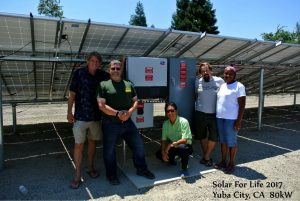
The whole Solar For Life team
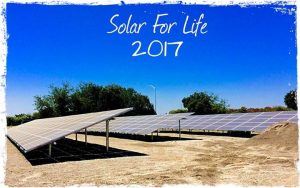
I am looking forward to the next install
I am so eager to take my training that I have learned during this last year and freely multiply it. There is more technical training that I would like to share but I had better wrap this up. Obtaining the knowledge covered in this blog has come with great sacrifice and an even greater monetary cost. Amie and I are still recovering financially and have made a commitment to move to Oklahoma City to help staff at our mission agency called Beautiful Feet. Please continue to pray for us as we plan to continue our training in OKC. We are looking forward to what our next chapter in life will bring as we take our next steps and push deeper into discipleship of Christ.

I enjoyed reading about the things you have been learning & your commitment to use this knowldge to help those in countries where modern technology is unavailable. I found your information on the simple, & non-poluting ways of producing food & energy quite interesting. I can see how valuable this information would be to people in undeveloped nations. What a great way to help them meet their basic needs & open a door for ministry to their spiritual needs.
God’s power to you & Amy as u continue your preparation for ministry.
Nate and Amie, this is awesome! I’m blessed to be a part of your adventure. Thanks for investing your lives for those with basic needs. You are serving Jesus well!!